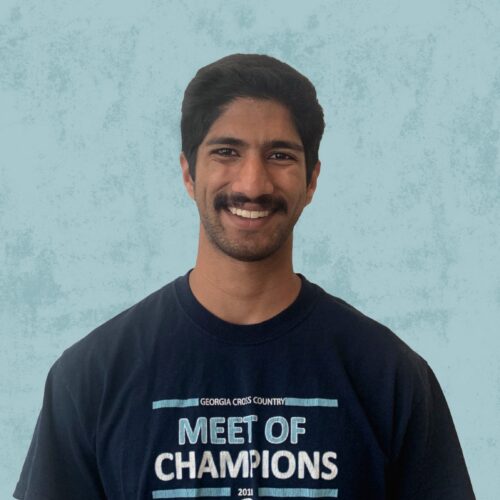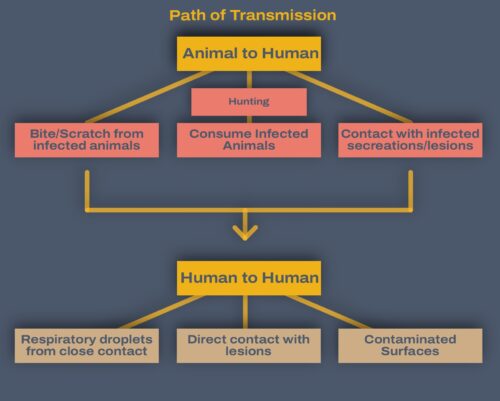For students hoping to pursue medical careers, distilling science into plain language for a general audience is an invaluable skill. Collaborating with peers about how best to communicate important concepts is also important. And practicing writing these explanations for a real-live audience of thousands is even better. When students learn to adapt course content and add it to relevant Wikipedia articles, they accomplish these learning outcomes and more, all while familiarizing themselves with existing literature in their field.

Kedarnath Malapati is a fourth year, on track to be Masters student, in epidemiology at the University of Georgia. He recently added scientific information about the monkeypox virus to Wikipedia as part of Dr. Jennifer Walker’s Introduction to Microbiology course. Kedarnath says he is hoping to pursue pediatrics, and he understands the challenges of communicating what he knows to a general audience. This project encompassed those difficulties. Considering that the public consults Wikipedia for medical information more than any other online resource and that 8,000 people have already visited the monkeypox virus article since Kedarnath and his group updated it, he’s already doing a great job.
Building science communication skills
“We’re in a weird position as students. We can see from the perspective of people who haven’t gone to college and then also from the perspective of the people who have graduated from it and have gotten their degrees and PhDs. We’re the middle ground,” Kedarnath says. “Editing Wikipedia was a nice way to fill that gap, because when you read a research paper you’re like, ‘What is going on?’ When I’m translating a research paper into a Wikipedia article, I take that into account. I want a person to be able to read it once, instead of the five times I read over the research, and understand what’s going on.”

Becoming familiar with the current peer-reviewed research
Before the assignment began, Dr. Walker created a list of articles students might work on. At a first glance, it wasn’t obvious to Kedarnath and his group what they could add to the article on the monkeypox virus.
“We didn’t know much about this virus, we hadn’t really talked about it in class yet. And so we thought, ‘What do we add that’s unique to what’s already there?’ Just looking at it from a layman’s perspective, it looked fine, like it had all the information you needed. But as we researched into the virus itself, we realized there was actually a lot that we didn’t know about that we could tell other people.”
So the group dove in. First, they had to get a sense of the research landscape and understand current scientific consensus around the virus.
“I wanted to figure out just how many research articles there were about it. Because, initially, our professor said that many of these viruses don’t have much research on them. That’s why it’s been difficult for them to have information on Wikipedia.”
That was a big draw for Dr. Walker in choosing to pursue the assignment in the first place. “In my opinion, the bigger impact [even more than how many page views the article might get] is my students’ gains in understanding how to go about finding peer-reviewed materials and communicating with fellow Wikipedia editors to agree upon.”
After extensive research, Kedarnath and his group were able to identify what was most vital to include in their edits.
“We ended up putting up pertinent stuff like how the virus evades the immune system in a host cell. We thought that was pretty important because it does it differently than other viruses. One of the interesting parts is that it’s a DNA virus, but it uses its own machinery instead of using the cell’s machinery. We wanted to add stuff like that—how is this virus unique from other viruses?”
Kedarnath looked at Wikipedia’s article for the Epstein-Barr virus as an example of typical structure and information.
“Comparing our article to other articles, or our virus to other viruses, gave us a good baseline of what to do. And it was interesting too because we had other schools work on our article as well. Another school was set to start as we were finishing our articles. I was like, ‘I wonder what they’re gonna add!'”
Practicing consensus-building and collaboration
As opposed to a typical essay, working with other students to embed new information into pre-existing content required a totally new approach to collaboration. The group didn’t start from the beginning of the article, but rather jumped around to different sections as they uncovered additional gaps in the information. This sort of creative, comprehensive study more closely mirrors the scientific research process “in the wild”, so to speak. One asks oneself, ‘How can I build upon what’s already out there?’
Instead of splitting the article into parts for each group member to work on, which some groups have success with, Kedarnath and his classmates decided to all work holistically, at the same time, allowing their interests to guide them. “Just having the freedom to choose whatever part of the article you wanted to tackle was nice.”
He says he’ll take this approach to collaboration into his other classes, especially what he learned from discussing changes with his group and coming to a consensus about the best way forward.
“It’s not like writing a group essay in a Google doc where you split it up into parts like, ‘you take the methods section, I’ll do the introduction.’ This was different because there wasn’t necessarily a methods section or an introduction. It was just different parts about how this virus works. And we actually ended up collaborating on how we should word it. It was definitely different from a normal group essay, but that was a good thing. I felt like I had more of my group’s assistance and I talked to them more than I would normally.”
Developing skills for a chosen career
Kedarnath wants to go into public health work to see this exact kind of science communication in action.
“I can understand what’s going on in the public sphere and explain to my patients why I’m suggesting they do things. You don’t want to tell a patient you’re not supposed to eat a high carb diet and expect them to change. You don’t tell them, ‘You have to get this vaccine or this shot.’ They might wonder, ‘Why do I have to get this booster shot? I already got this shot once.’ And you have to explain to them that this is how your immune system works. The antibodies run on cycles where it goes up and then you have to reinvigorate them with another dose to make it happen again. When you give someone an explanation, it really helps them build habits that are better for them. So interacting with the general public is a good skill to have. You can be as smart as you want, but to get someone to believe in what you’re telling them to do, you have to explain in a way they understand why they are doing what they’re doing.”
Visit teach.wikiedu.org to find out more about how you can incorporate a Wikipedia project into your syllabus.
